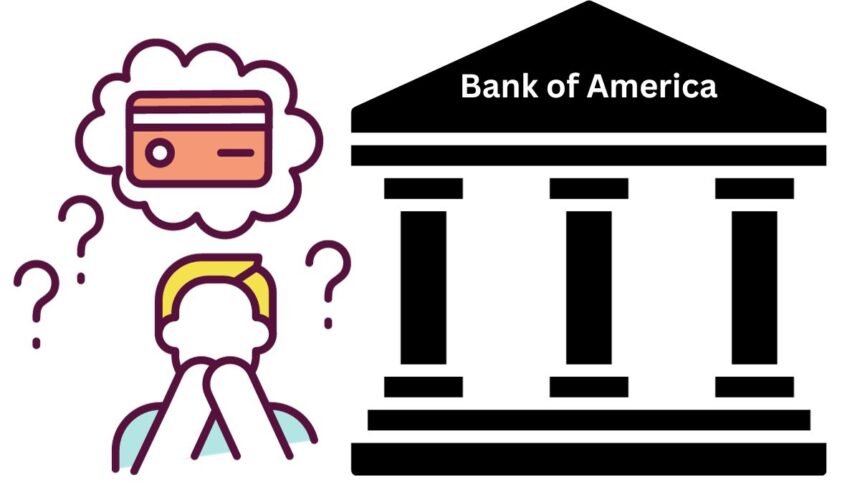A $1,700 charge caught Marcus Johnson’s attention, and he wasted no time taking action. Even though he reported the fraud immediately, the bank first disputed his claim, which shocked him.
“As a victim, you were punishing me,” Johnson told WTVD, a local station. It looked like the type of deceitful charge that banks are meant to safeguard their customers from. Then why was Bank of America so slow to act?
The Strange Charge That Drained His Account
Johnson, an IT specialist from North Carolina, recounted checking his account balance the night before and seeing $1,770 in the bank. But then he got an alarming text from Bank of America about his low balance. When Johnson checked his account, he saw only $70 remaining.
The reason? A mysterious $1,700 “automatic bill payment” that Johnson never set up drained his funds.
Immediately Reporting It – But Still Denied
As soon as Johnson became aware of the suspicious transaction, he notified Bank of America. However, after almost ten days of waiting for a response, he was shocked to get a letter denying his fraud claim.
“If you were to view a good steward of my money, then this should never happen,” WTVD said. As a victim of fraud who had nowhere to turn for help, Johnson felt penalized by the financial bureaucracy.
Happy Ending After Media Gets Involved
The good news is that Johnson’s case was settled after the local TV station called Bank of America to help him. He got another letter telling him that his scam claim had been accepted and that he would be getting $1,700 back.
Johnson was glad to get his money back, but he was still angry that the bank wasn’t being clear. “The bank provided no other information except for the claim now being approved,” the piece says.
How Does the Fraud Claim Process Work?
When the news outlet asked, Bank of America explained how customers can make complaints. A spokesperson said, “Each claim is looked into, and the client is contacted about the outcome.”
That being said, why do some claims get lost? Two other cases show that Johnston’s is a disturbingly regular one:
- Luca Bencini tried to get a $27,000 charge that was not his refunded. Bank of America didn’t agree with his story until the media got involved.
- Virginia Wimer, who is 95 years old, is still suing the bank over a $4,237 overdraft protection charge that she says was not her fault.
Johnston was persistent and got a lot of attention, which paid off. But most people don’t have a TV station on their side. And form letters that deny claims don’t tell you much about why the bank turned down scam cases.
Customers Bear the Burden of Fraud Claims
FICO says that since 2018, the number of fraud charges taken from customer accounts has tripled. In 2021, $56 billion worth of deals were done without permission.
Is Bank of America and other banks doing enough to protect customers from fraud, which is on the rise? Security experts say that the way banks work in the U.S. unfairly expects people to stop and deal with fraud on their own.
Brittney Hellmuth is a manager of financial investigations. She helps people whose cases banks won’t pay at first. “The U.S. banking system is broken for people who have been scammed,” she says. “The customer has to show that they deserve their money back, but until the bank can do that, the customer should be thought to be innocent.”
In contrast to credit card charges, banks legally require customers to report any unauthorized behavior on their bank accounts right away. If you miss the short notice time, you might have to pay even if you get ripped off.
Banks Decide: Are You Liable?
Banks say they keep a close eye on scams. But customers have to persuade institutions when they find and report charges that don’t seem right. That, says Hellmuth, leads to horrible fraud claim fights like the one Johnson was in.
Once an argument arises, the bank’s “investigators” decide whether the customer or outside criminals are to blame and should be held financially responsible. But their unclear methods have made people worry about ethics and responsibility.
Hellmuth says, “The bar is so high for consumers to prove they were ripped off.” “Even if the bank can’t show that you gave permission for a transaction, they still often hold victims responsible” by not paying claims.
Pushing the Fraud Burden Back on Banks
Because of this imbalance of power, the consumer rights group Public Citizen recently asked federal officials to look into the matter in September. They say that banks unfairly charge innocent customers for scam costs.
The group wants new rules that make it easier for both customers and banks to keep their accounts safe. This is especially important for big banks with lots of resources, like Bank of America.
Yes, Hellmuth agrees. “Banks need to improve their fraud prevention services by putting in place mechanisms that keep getting better as criminals come up with new, more complex attacks,” she says.
She also wants to stretch the time consumers have to file fraud claims. It is unfair to need to be notified within just a couple of days. She says, “Getting ripped off is a very traumatic experience for victims.” “They deserve grace periods that follow the rules of the law.”
Fraud Will Never Disappear, But Banks Can Better Protect Customers
In all honesty, bank theft will always happen as long as there are banks. A cybersecurity expert named Jacob Cross says, “Even with advanced technologies, fraud is just going to happen.” “Some customers are always fooled by phishing attacks and other methods.”
Banks don’t just dispute charges after the fact; they also focus on security that keeps problems from happening. Reporters were told by Bank of America that its “multi-layered approach” to finding and stopping fraud “protects our clients.”
For detection, you have to keep an eye on your account activity to look for strange transactions. Prevention means keeping account information safe and making sure that people who make changes are who they say they are.
But security mechanics are usually kept secret so that criminals don’t get ideas for how to get around them. Customers also don’t know how safe their money really is because of the secret.
More Accountability and Transparency Needed
It is impossible to have zero fraud. But until trust is fully restored, banks could be more open and responsible about how their security practices affect customers.
Cross suggests public breach reports that explain what happened, how many customers were affected, and what the organization will do to stop attacks from happening again. Publicating internal audits on how well fraud is being detected could also reassure account users who are worried about risk factors.
And as Johnson’s case showed, the process for deciding fraud claims is still very unclear, which hurts trust. As random state victims like Virginia Wimer continue to fight with Bank of America over what they say was an error in their overdraft charge.
It would be easier for people to trust again if dispute policies and case outcome data were made clear to the public.
Institutions still have a hard time finding the right balance between real protections and a fraud threat landscape that is always changing. Banks can win back customers’ trust one happy customer at a time by putting more emphasis on both security and the customer experience.





